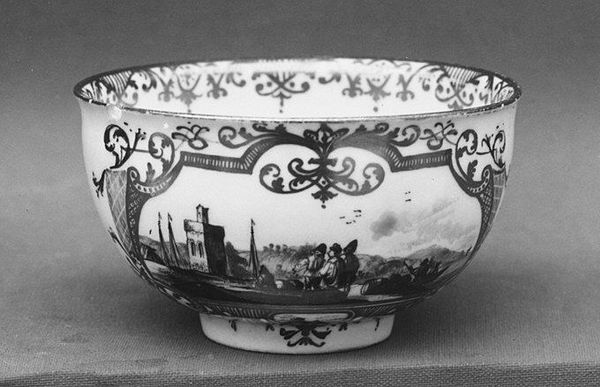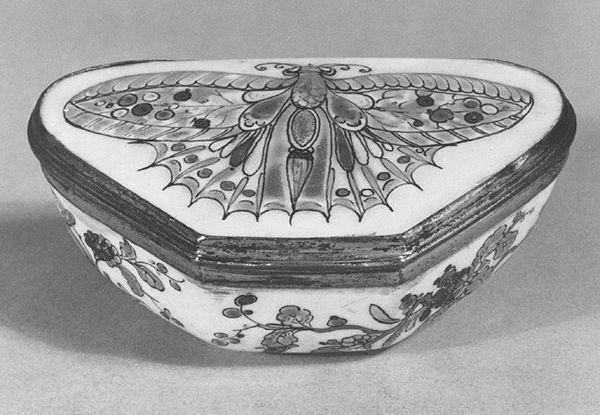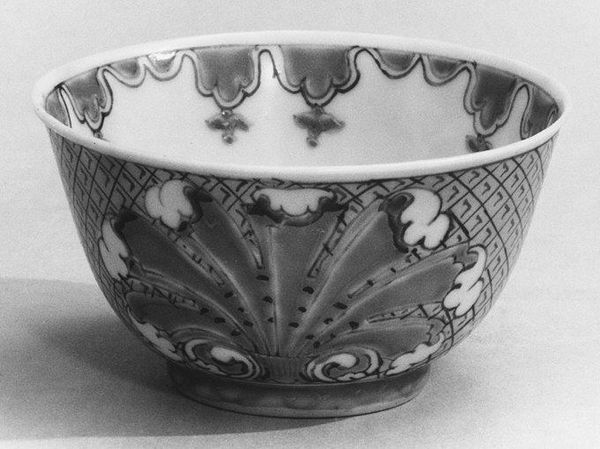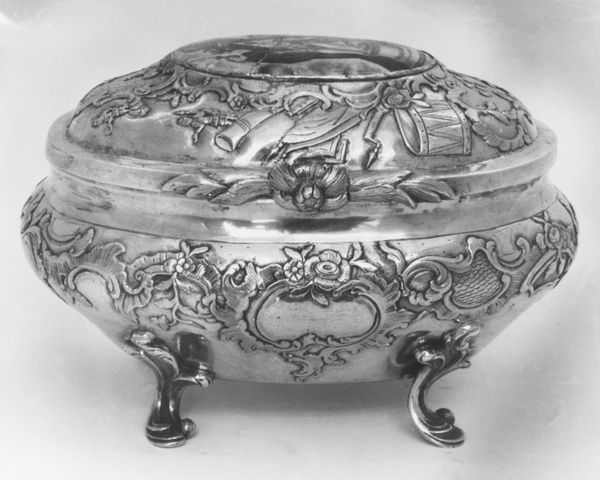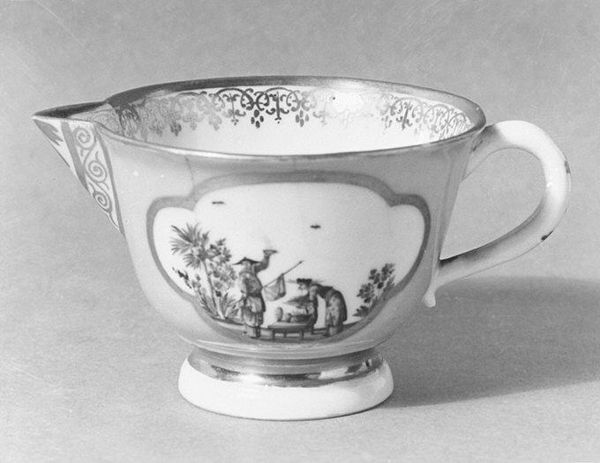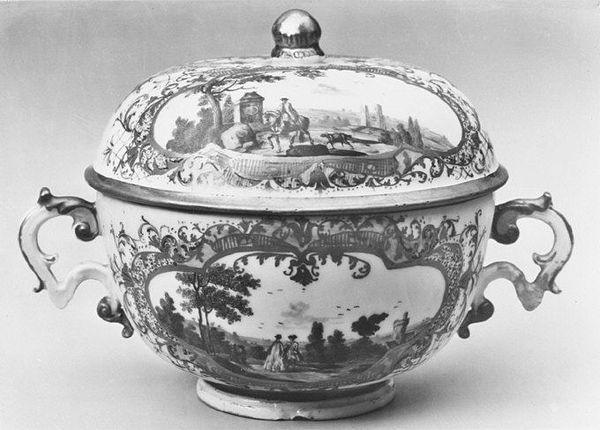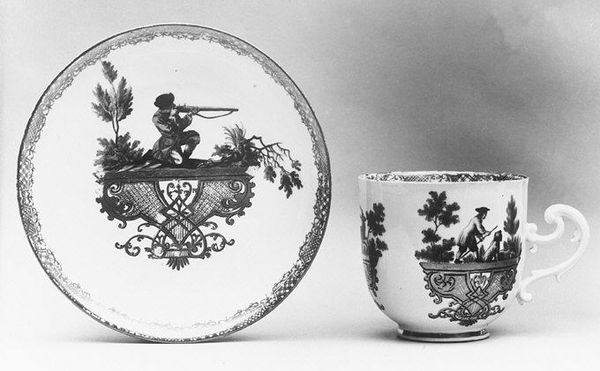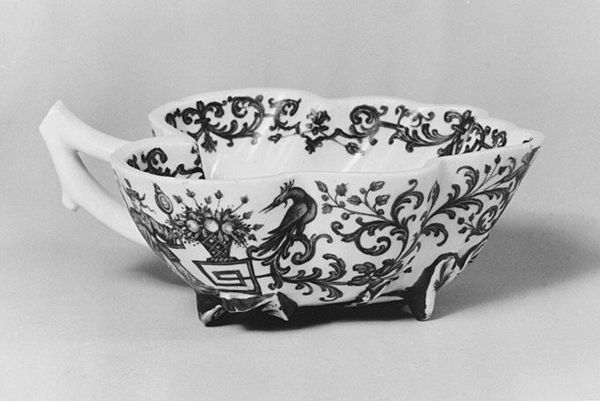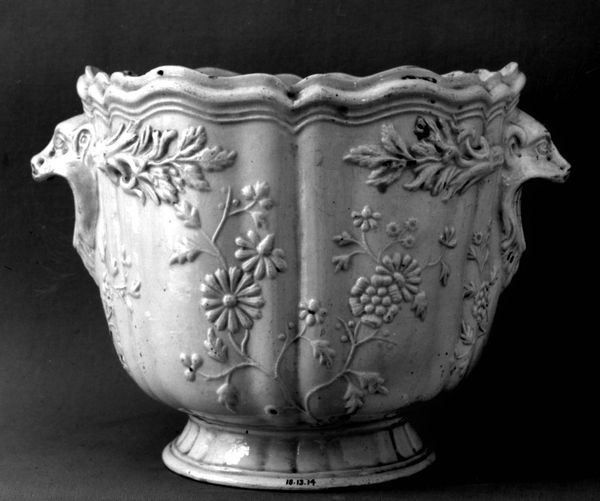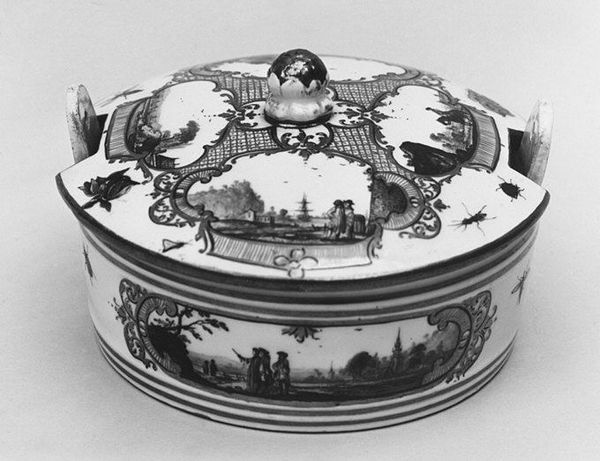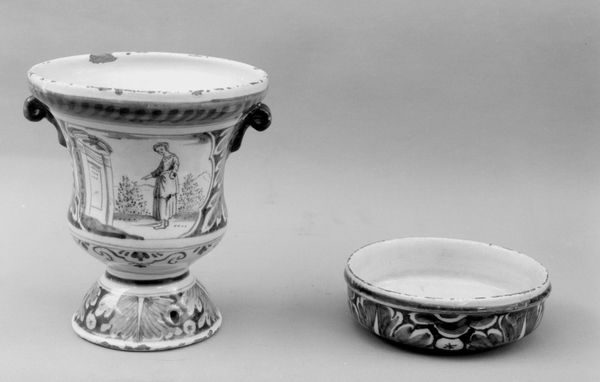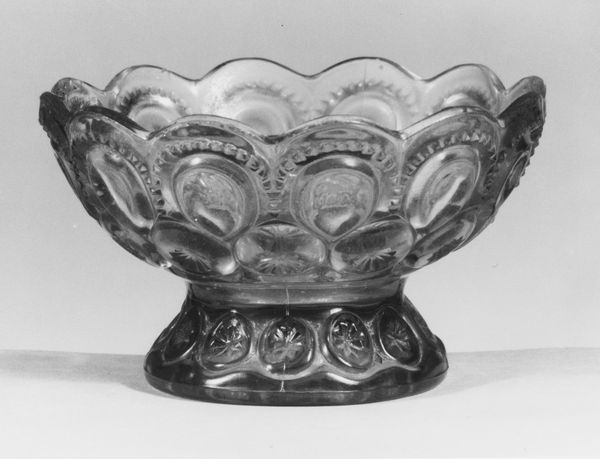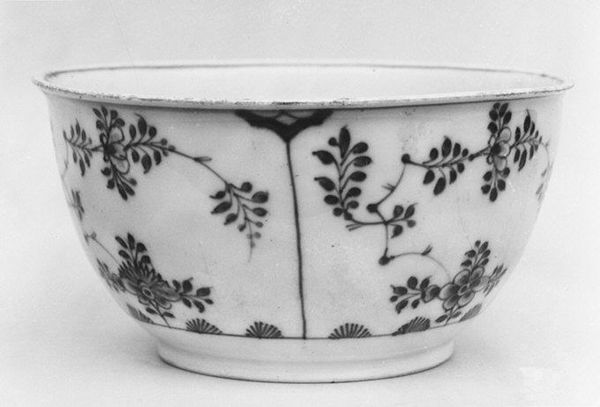
ceramic, porcelain, sculpture
#
decorative element
#
baroque
#
ceramic
#
bird
#
porcelain
#
sculpture
#
black and white
#
decorative-art
Dimensions: 3 3/8 × 7 in. (8.6 × 17.8 cm)
Copyright: Public Domain
Curator: Here we have a porcelain bowl produced by the Meissen Manufactory between 1715 and 1753. It's currently held at the Metropolitan Museum of Art. Editor: The instant impression is ornate, maybe even a little overwhelming. So much packed into the monochrome palette, which gives a certain seriousness, but almost to the point of humor. I wonder what it was like to drink from this thing? Curator: It exemplifies Baroque decorative arts through its high level of intricate ornamentation. The ceramic material speaks to its context, as Meissen porcelain was one of the first European manufacturers to successfully produce it, giving them significant social and economic capital at the time. It also represents labor— the specialized skill necessary to cast, fire, and paint such a vessel, which would be the pride of the artists but also indicative of intense factory work. Editor: The coat of arms decoration definitely feels like a status symbol. Imagining someone in powdered wigs and elaborate costumes sipping from this bowl feels almost absurd now. The images of the birds and the decorative crown motifs evoke power and prestige, which is typical of royal display, don't you think? Curator: Precisely. It speaks to systems of power and patronage operating at the time. This bowl would likely have been commissioned by a noble family to advertise their lineage, their power and their cultivated appreciation for fine craft. Also note the details of the rim, such tiny repetitive motifs. It reflects mass production, and consumption that the decorative arts trade helped pioneer. Editor: Do you think someone actually put their keys in it, you know, in its past life? I get the sense there's this contrast: its intense decoration for grand purposes, mixed with such utilitarian functionality, makes the object inherently quirky and intriguing, something like history served up with humor and an air of grandiosity. Curator: Well said! It truly does reflect layers of craft and historical contexts, intertwined, which prompts contemplation, as it merges aristocratic showiness with tangible processes. Editor: Right! I'm leaving with a feeling for the skill that shaped this seemingly simple object and its silent dialogue about power.
Comments
No comments
Be the first to comment and join the conversation on the ultimate creative platform.
